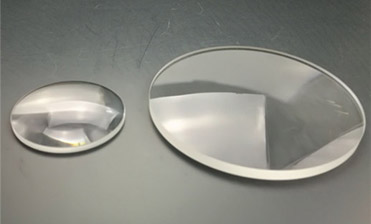Do you know the principle of the Lens in the camera?
Plano Convex Lenses China's application principle on the camera:
(1) imaging principle
The light emitted by an object is reflected or refracted by an optical element, and the image reconverged is called a real image, which is the intersection point of the actual light. In Plano Convex Lenses imaging, the real images formed are all inverted. If the light emitted by an object diverges after being reflected or refracted by an optical element, the image formed by the intersecting extensions of them is called a virtual image.
(2) Undertaking method
Virtual images can be viewed directly with the eyes, but cannot be taken over with a light screen; real images can be taken with either a light screen or directly with the eyes. When people look at the virtual image, light still enters the human eye, but the light does not come from the virtual image but is the light reflected or refracted by the optical element. People just have the experience of "light propagating in a straight line", thinking that they are emitted from the virtual image. The virtual image may be formed by reflection or refraction, such as a large virtual image such as a plane mirror, and a convex lens into an enlarged virtual image.
(3) Imaging position
In reflection imaging, the real image is on the same side of the mirror surface. In refraction imaging, the object image is on the opposite side of the lens. In reflection imaging, the object image is on the opposite side of the mirror surface. In refraction imaging, the object image is on the same side of the lens.
Plano Convex Lenses
1.
The object is located outside the 2x focal length of the convex lens (μ> 2f) and becomes an inverted, reduced, real image.
The chirp image is located between one and two focal lengths of the convex lens. (F <μ <2f).
The object and the real image are located on both sides of the convex lens.
Use the camera to make an inverted, reduced, real image.
2.
The illuminated object is outside the double focus of the lens (μ > 2f).
Compared with the size of the real image, the real image is smaller than the object (small image).
Comparison of object distance and image distance The image distance is smaller than the object distance (large image distance).
3. Camera main structure
A lens is generally composed of several lenses, which is equivalent to a convex lens.
The film is equivalent to a light screen, used to receive images.
The cabinet is equivalent to a dark room, and the film is coated with a layer of light-sensitive material.
The focus ring can adjust the distance from the lens to the film to form a clear image on the film.
Aperture can control the amount of light entering from the lens. The smaller the number on the aperture, the larger the aperture and the more light entering the lens.
The shutter can control the exposure time, and the number indicates the reciprocal of the second.
4. Features of camera photography
(1) The distance from the object to the camera lens is greater than the distance from the film to the camera.
(2) The farther the object is from the camera, the smaller the image of the object on the film, the closer the position of the image (the distance from the film to the lens), and the shorter the dark box.
(3) The image formed on the camera film must be smaller than the object.
(4) Objects and images are on both sides of the lens (convex lens).
1. The object is located between the double focal length and the double focal length of the convex lens (2f> μ> f) into an inverted, magnified, real image.
Compared with the size of the real image, the real image is larger than the object (large image).
Comparison of object distance and image distance The image distance is greater than the object distance (large image distance).
We are Spherical Lenses Manufacturer, welcome to consult.

评论
发表评论